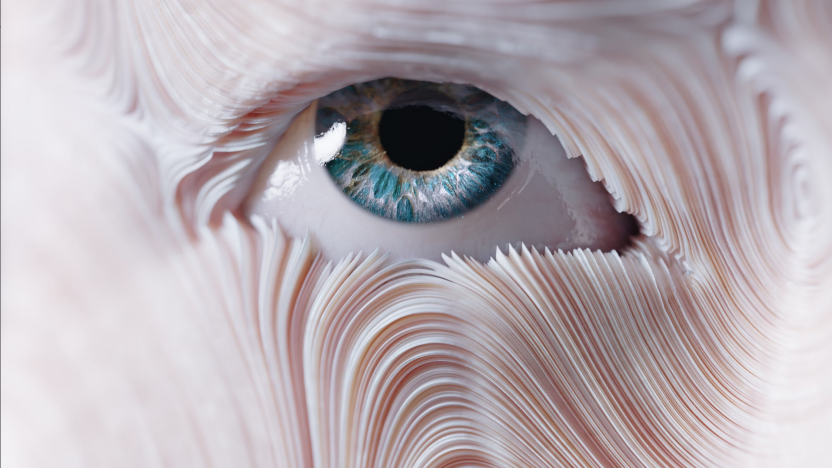AI tools are transforming the design process, enhancing user research, automating design tasks, personalizing user experiences, improving usability, designing for accessibility, testing and iterating designs, and facilitating collaboration within design teams.
Incorporating AI into the design process is crucial for creating exceptional user experiences and staying ahead in the competitive design industry.
10 AI Tools to Revolutionize Your UX Design Process
| AI Tool | Description | Price |
|---|---|---|
| Adobe XD | Leveraging Adobe Sensei, it provides tools for voice prototyping and auto-animation. | Free Starter Plan; Paid plans available |
| Pendo | Uses data analytics to help teams create more compelling user experiences. | Contact for pricing |
| Kuki Chatbot | Chatbot platform powered by AI to enhance user experiences on websites. | Free tier; Premium versions available |
| B12 | Combines human designers with AI to create and manage websites. | Monthly subscription pricing |
| Maze | Rapid testing platform that uses data to transform your design prototype into actionable insights. | Free tier; Paid plans available |
| Uizard | Converts hand-drawn wireframes to digital and uses AI to transform them into themed app prototypes. | Free tier; Premium plans available |
| Replika | A tool that can be integrated into apps for AI-driven conversations to enhance user experience. | Pricing varies based on usage |
| Landbot | Helps in creating AI-powered chatbots and conversational websites to enhance user engagement. | Free Starter; Premium plans available |
| Apty | Uses analytics to understand user behavior, helping in creating more effective onboarding flows and tooltips. | Contact for pricing |
| Wix ADI | Artificial Design Intelligence by Wix to create websites by answering a few simple questions. | Free for basic use; Premium plans available |
Clever AI Humanizer
A lifesaver for mockups and 3D renders, having a tool that lets you swap out placeholder lorem ipsum for real, context-ready text in seconds, making your visuals look like finished products instead of rough wireframes.
The Clever AI Humanizer is an online text converter for turning stiff, robotic drafts into writing that sounds like it came from a real person. Everything runs online with no downloads or sign-ups required: just open the site, paste your text, click once, and you’ll get a clean, readable version that feels authentic. It doesn’t rely on simple synonym swaps; instead, it understands tone, rhythm, and the natural flow of language, keeping your message the same while making it sound unmistakably human.
You can use it for blog posts, landing pages, emails, UX microcopy, or captions—anything that needs to read naturally and pass AI detectors without raising eyebrows. It works seamlessly on desktop and mobile, supports multiple languages, and remains completely free. Built by the CleverFiles team, it’s become the go-to choice for creators, marketers, students, and designers who want their content—and their renders—to both look and sound real.
Streamlining the Design Process with AI
One of the significant impacts of AI tools on UX design is streamlining the design process. Traditionally, designers spend significant time on repetitive tasks such as wireframing, prototyping, and layout design. However, Artificial Intelligence offers a way to streamline the Design Process
AI tools significantly enhance UX design by making the design process more efficient. Designers have traditionally devoted extensive time to repetitive work, including wireframing tasks as well as creating prototypes and developing layouts. AI tools enable designers to automate routine tasks so they can concentrate on creative and strategic work aspects.
The AI-driven tools Sketch2React and Framer X create code by processing wireframes and prototypes. Designers no longer need to write codes by hand because this process automation helps them save both time and resources. Adobe Sensei functions as a tool to analyze design layouts and provides improvements that reflect both expert best practices and user preferences.
Multiple advantages exist when AI tools help designers improve their workflow. Designers improve their work output by automating repetitive design tasks. Designers who use automation to eliminate repetitive tasks can dedicate their efforts to creative solutions, which produce superior design outcomes. Through automation of key design process elements, designers maintain quality while working within strict deadlines.
Better designs emerge from using both data and insights to inform design decisions.
UX design depends heavily on user research because it allows designers to gain knowledge about what users need and prefer. AI tools improve user research capabilities through extensive data analysis, which produces essential insights.
MonkeyLearn provides sentiment analysis tools that read through user feedback and social media information to assess public perception of products and services. Designers can detect problem areas through this information to guide their improvements. Tools such as Hotjar and Crazy Egg track website user behavior through AI algorithms, which generate heat maps and click maps that reveal user interactions to designers.
The use of AI in user research remains a vital method to develop designs that users find meaningful. When designers analyze data and understand user preferences, they can make educated design choices that fulfill user expectations.
Automating Design Tasks with AI
The design process requires designers to allocate extensive time to repetitive tasks, including image editing and picking colors. Designers can conserve both time and effort when AI tools take over their routine design tasks.
Adobe Photoshop uses AI algorithms to automatically remove unwanted objects from images through its Content-Aware Fill tool. By removing manual editing tasks, designers can dedicate more time to the creative elements of their projects. Designers can generate palettes without manual selection thanks to Coolors, which creates color combinations based on user-defined preferences.
Design professionals can see the advantages when AI systems perform design automation functions. Designers achieve higher efficiency when they minimize the duration spent on repetitive work activities. The capability to show projects faster without compromising quality emerges when designers can concentrate on strategic design elements.
Personalizing User Experiences for Creating Tailored Designs for Every User
Creating exceptional user experiences relies heavily on personalization as its essential component. AI solutions enable designers to customize user experiences according to personal design preferences of individual users.
Amazon uses AI algorithms in its product recommendation system, which analyzes user behavior to offer personalized recommendations. Designers can produce personal design solutions that respond directly to every user’s specific requirements and choices. Dynamic Yield technology enables real-time personalization of content through user data analysis, which helps give targeted content to each visitor.
Designs created for specific users help improve both their satisfaction and their level of engagement. Designers who apply AI tools for personalizing user experiences create designs that connect with users on an individual level, thereby boosting both satisfaction and loyalty.
Improving Usability with AI
The crucial element of usability in UX design achieves substantial improvements through AI tools, which apply machine learning algorithms for better user experience outcomes.
AI algorithms enable voice assistants such as Siri and Alexa and chatbots to provide appropriate responses after understanding user questions. Machine learning algorithms help create more efficient user experiences through intuitive interactions. The Usabilla tool analyzes user responses to provide actionable improvements in usability design
Through AI optimization of user interactions, designers produce intuitive systems that function efficiently and provide ease of use. The result of these design strategies manifests as better user satisfaction together with higher engagement rates.
Designing for Accessibility with AI: AI tools help designers build websites and apps that support all users.
Creating inclusive designs requires designers to focus on accessibility so their products work well for every user. AI tools achieve accessibility functions, which enable designers to create web applications usable by people with disabilities.
Visually impaired users benefit from AI algorithms within screen readers, such as JAWS, that vocalize website and app content. AI algorithms power YouTube’s automatic captioning feature, which generates video captions to make them available for users with hearing impairments.
Businesses gain advantages when they create inclusive designs, which are also ethically necessary. Designers who create accessible products will both expand their user base and guarantee the functionality of their designs for everyone.
AI models enable testers to run design experiments, which help improve final products through iterations.
The design process depends heavily on testing and iteration, while AI tools enable automation of these activities to speed up prototyping as well as enhancement.
A/B testing platforms such as Optimizely employ AI algorithms to examine user behavior in order to identify superior design variations. The AI algorithms within Crazy Egg heat mapping tools enable the tracking of user website interactions to visualize how users engage with the site.
Through automation, designers can execute speedy testing of multiple design variations and refine their work based on feedback from users. Through rapid prototyping combined with ongoing enhancements, design teams achieve improved design outcomes.
Collaborating and Communicating with AI: This chapter examines how artificial intelligence tools tweak design team workflow processes.
Design teams achieve better workflow outcomes through collaboration and communication, which AI tools help to enable.
Project management platforms such as Trello and Asana employ artificial intelligence algorithms to handle task assignments and scheduling automation maintains team organization and timely progress. InVision operates as a design feedback platform that enables designers to work together with stakeholders through live feedback and annotation capabilities on design projects.
AI tools transform design teams into higher-performing units by streamlining both collaboration and communication. These improvements strengthen team dynamics while speeding project delivery and enhancing final design quality.
The Future of UX Design: The design industry stands to transform through the application of AI tools and their capabilities.
AI tools hold enormous future potential for transforming the design industry. Designers will gain access to increasingly advanced AI tools that will improve design process operations.
AI-powered design tools will enable automatic creation of designs from user needs, which removes manual work from professionals. AI algorithms possess the capability to analyze user preferences while delivering tailored designs instantly for users.
Designers who keep track of AI development within design maintain their competitive edge. The integration of AI technology allows designers to develop outstanding user experiences that satisfy users’ changing requirements and anticipations.
The Rise of AI in User Experience: A New Era for User Experience Companies
AI’s influence on UX design has dramatically changed designer workflows while simultaneously remaking the operational field of user experience companies. Artificial intelligence exists in our present time, functioning as a robust toolset that simplifies workflows and improves comprehension of user needs to produce superior design outcomes. AI gives user experience companies power through task automation and deep user behavior analysis, which enables them to build superior user experiences.
AI transforms user experience companies through its capacity to automate repetitive work processes. Designers gain enhanced capacity to concentrate on strategic and creative elements, which results in more creative and user-focused designs.
AI-enabled analytics systems offer user experience companies unparalleled access to user data, which lets them examine user needs and preferences in high detail. The data-driven method creates designs that display visual appeal and show superior functionality and effectiveness. User experience organizations that integrate AI technology create personalized user experiences and enhance usability, which leads to business success for their clients. The advancement of AI requires user experience companies to implement new tools if they want to maintain their competitive edge while delivering creative solutions.
Conclusion
AI technologies have transformed UX design by changing designers’ workflow methods, which results in better user experiences. AI has revolutionized the design industry by streamlining design processes and improving user research, together with design task automation user experience personalization, and usability enhancement accessibility design advancement testing and design iteration, plus design team collaboration support.
Designers need to adopt AI technology because its advantages will enable them to maintain a competitive position within the design industry. AI integration into designer workflows enables efficient and effective work while creating designs that connect with users and delivering outstanding user experiences. To fully benefit from AI in their design work, designers need to continuously learn about emerging AI tools as AI technology develops.


[…] source http://www.toptut.com/10-ai-tools-to-revolutionize-your-ux-design-process/ […]